This wonderful Cornish workshop and museum is dedicated to the legacy of studio pottery trailblazer Bernard Leach
King Charles III, his forebears and their eye for the arts
King Charles III, his forebears and their eye for the arts
5 May 2023
Without Charles I’s avid collecting the nation wouldn’t have the extraordinary Royal Collection; without Charles II, we’d have lost what his father amassed. As the coronation of King Charles III approaches, what’s in store for the arts? Gareth Harris investigates
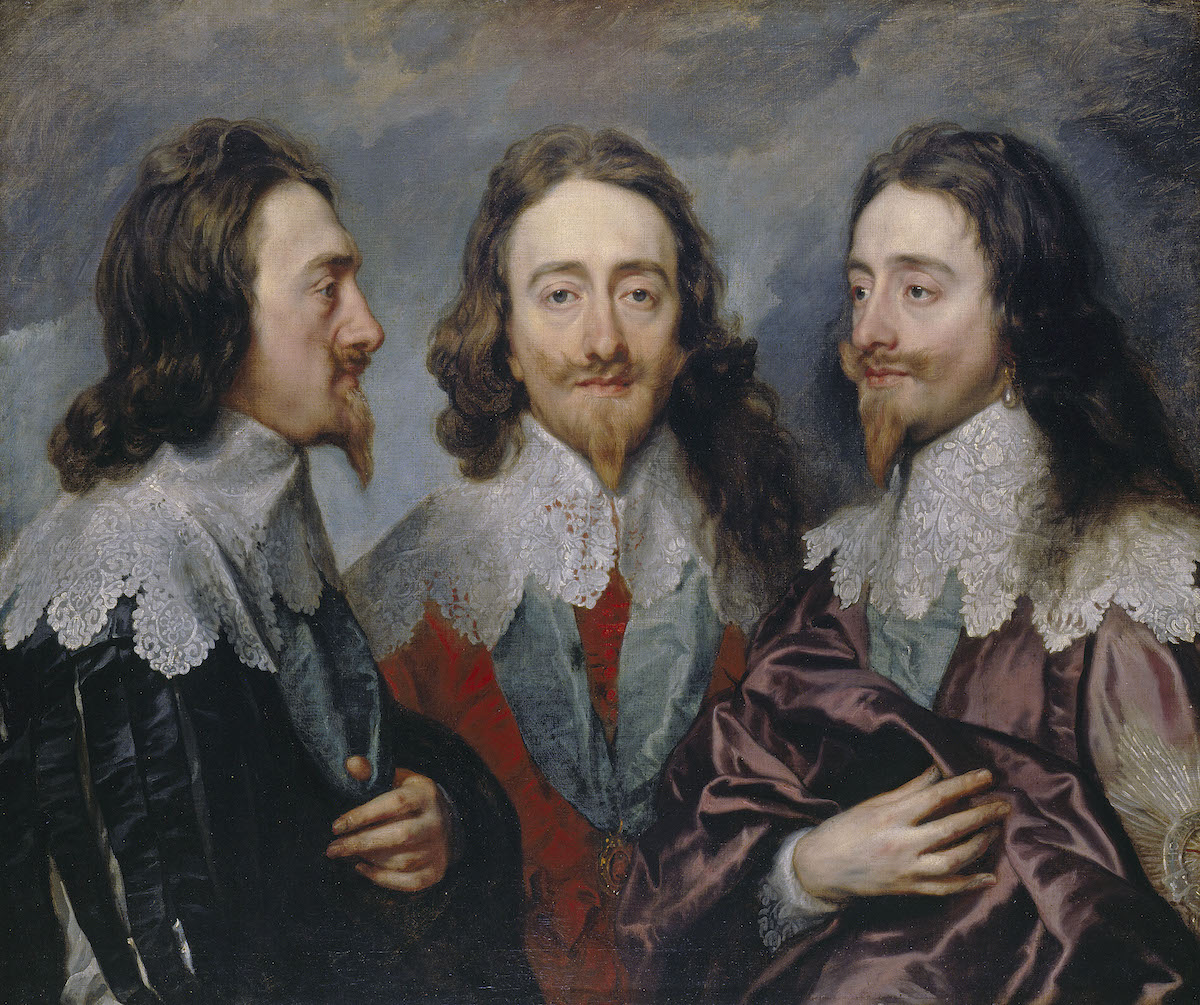 Anthony van Dyck’s triptych of Charles I, 1635–6, commissioned by the monarch and currently on display at Windsor Castle, c.1485–92. Royal Collection Trust/© His Majesty King Charles III 2023
Anthony van Dyck’s triptych of Charles I, 1635–6, commissioned by the monarch and currently on display at Windsor Castle, c.1485–92. Royal Collection Trust/© His Majesty King Charles III 2023
In the media storm over the auction sale of Salvator Mundi over five years ago – Leonardo da Vinci’s ‘lost’ masterpiece, which fetched $450.3m at Christie’s New York – one rather surprising fact stands out. There is a version of Salvator Mundi in Moscow, at the Pushkin Museum, that has a ‘CR’ (‘Charles Rex’) mark branded on the back of its frame. The insignia with a crown proves that it was once owned by Charles I.
The Stuart monarch’s place at the heart of this significant art historical saga reflects his influence and refined taste.During his reign (1625–49), he amassed treasures that make art historians’ jaws drop to the floor.
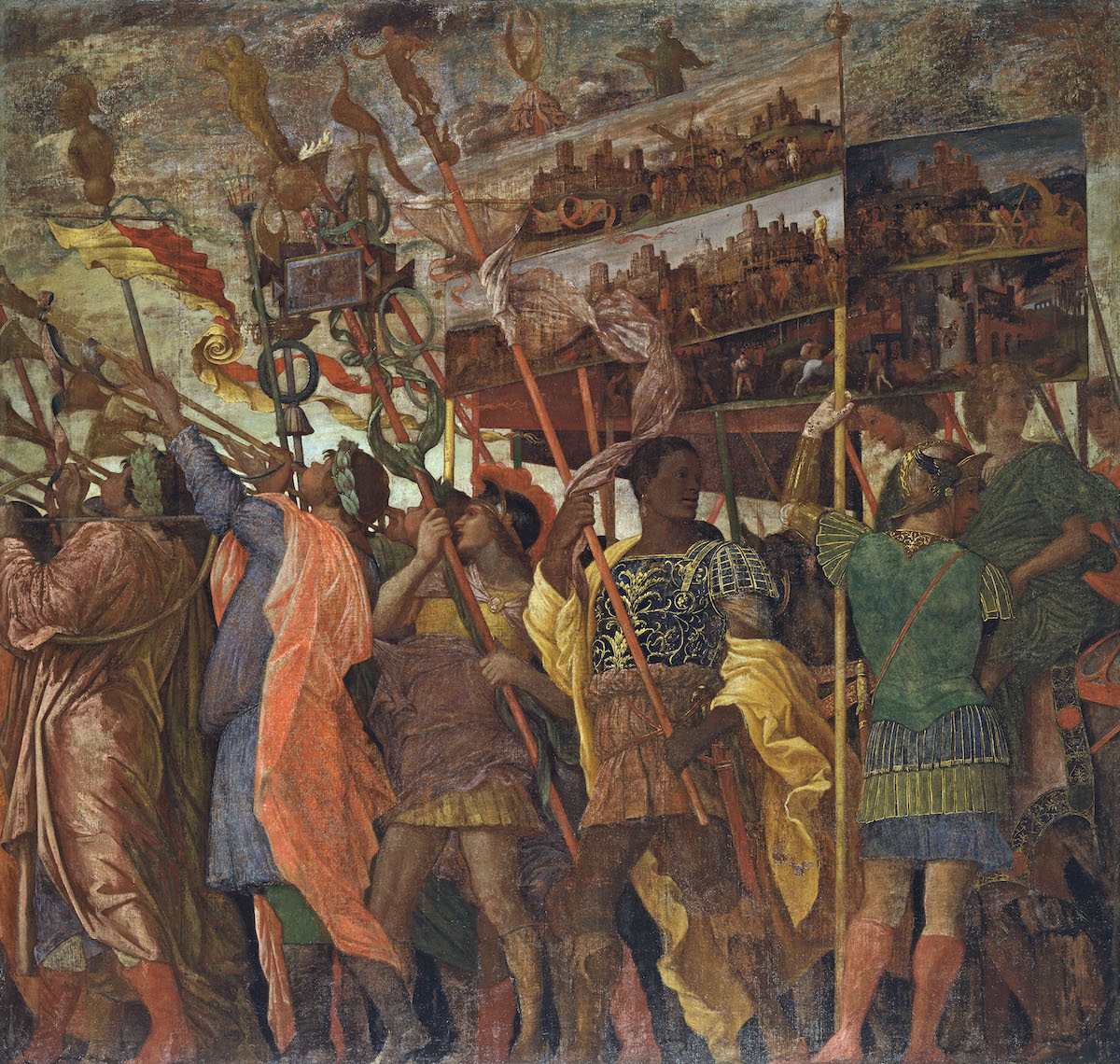 Andrea Mantegna’s The Picture-Bearers – one of nine canvasses of The Triumphs of Caesar, c.1484–92, on display at Hampton Court Palace. Royal Collection Trust/© His Majesty King Charles III 2023
Andrea Mantegna’s The Picture-Bearers – one of nine canvasses of The Triumphs of Caesar, c.1484–92, on display at Hampton Court Palace. Royal Collection Trust/© His Majesty King Charles III 2023
Over a quarter century Charles I acquired hundreds of paintings by artists such as Titian, Raphael and Anthony van Dyck. This obsession with art was sparked by a visit to Madrid in 1623, when Charles toured the Spanish Habsburg court and was especially taken with Titian’s erotic portrayals of mythological subjects.
Art historian Guido Rebecchini writes in the exhibition catalogue of Charles I: King and Collector (Royal Academy of Arts, 2018) that the prince returned to London not only with a ‘taste for [the] erotic’, but also an awareness of how ‘possessing a large and prestigious art collection [could] convey his own dynasty’s power and authority’.
The Madrid excursion gave the maverick royal the art-collecting bug.
When the Gonzaga Dynasty in Mantua ran into financial trouble around 1627, he swooped in, acquiring a considerable portion of the princely family’s top-notch collection. The first instalment – mainly of paintings – came to £18,280, 12s, 8d (some £3,800,000 in today’s terms); ‘Works by Titian, Raphael, Correggio, Caravaggio, Giulio Romano and Andrea del Sarto transformed the quality and depth of the British holdings wholesale,’ says a Royal Collection Trust statement.
Recording treasures
Charles I’s collection was meticulously documented by Dutchman Abraham van der Doort, appointed surveyor of the king’s pictures in 1625.
In his 2006 publication, The Sale of the Late King’s Goods: Charles I and His Art Collection, historian Jerry Brotton points out that van der Doort produced a ‘capsule history’ of one of the greatest collections of art in 17th-century Europe.
Charles even annotated the finished copy, deigning to ‘confirm the attributions and spelling of those artists he knew were important – Raphael, Titian and Mantegna’. The king’s ‘close attention to detail and tendency towards prevarication made him particularly susceptible to the pleasures of collecting, with its absorption in questions of provenance, attribution, style and judgement’, Brotton observes.
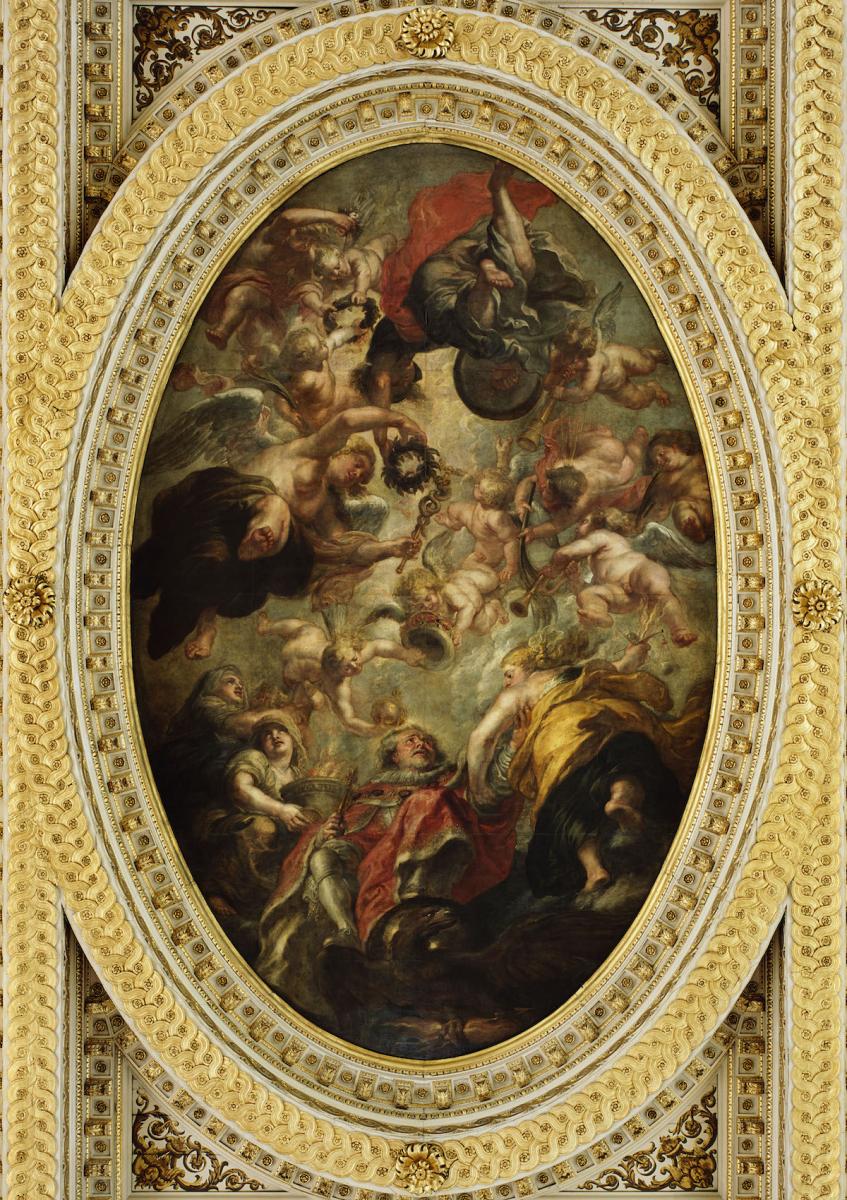 The Rubens ceiling at the Main Banqueting House, Whitehall. Royal Collection Trust/© His Majesty King Charles III 2023
The Rubens ceiling at the Main Banqueting House, Whitehall. Royal Collection Trust/© His Majesty King Charles III 2023
In 1649 Charles I, accused of treason, was beheaded outside the Banqueting House on Whitehall, home to a dazzling in situ ceiling painting by Rubens, commissioned by the monarch around 1636. His world-class collection was subsequently sold off by the Commonwealth government and dispersed around Europe.
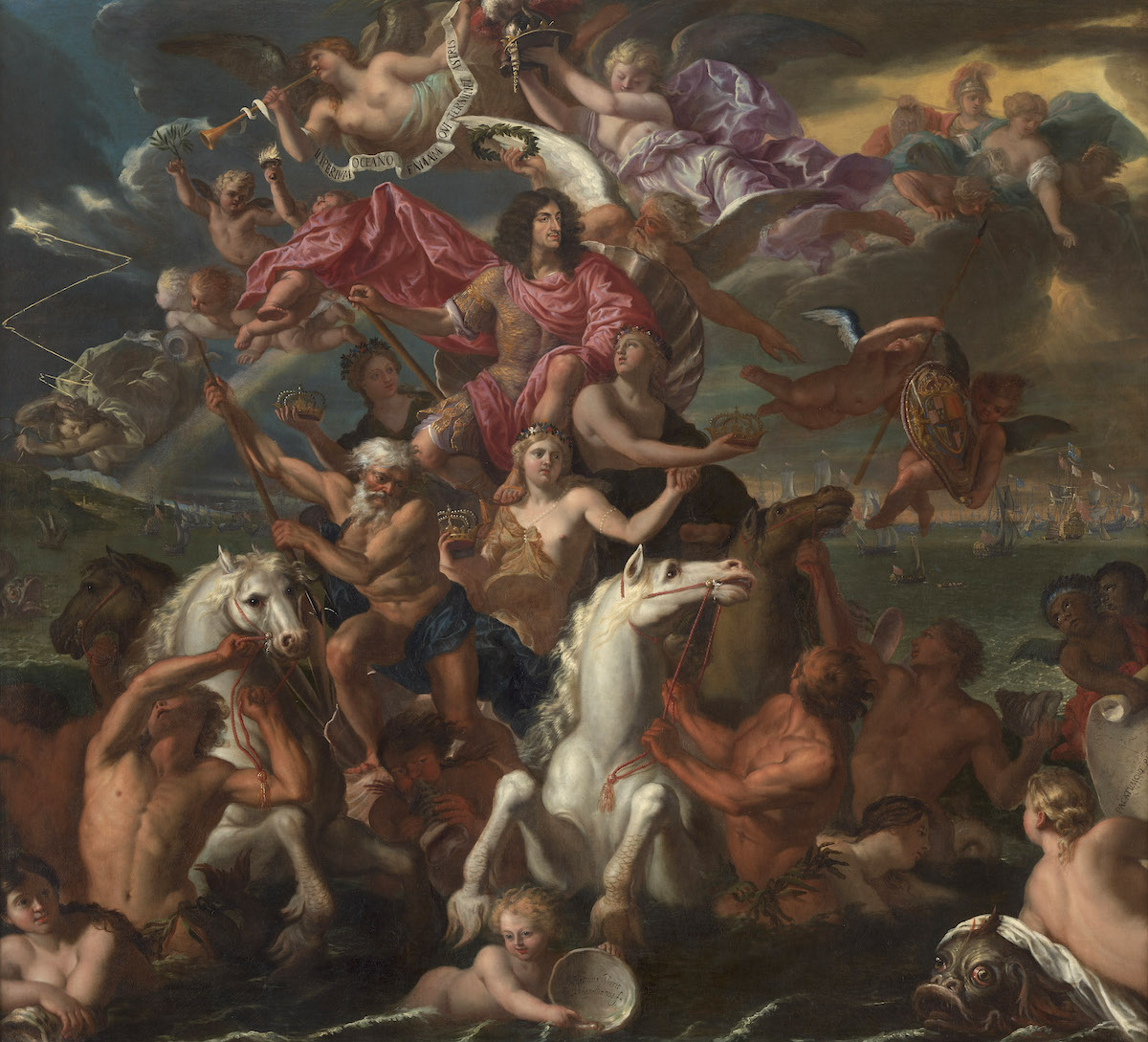 The Sea Triumph of Charles II by Antonio Verrio, currently on display to the public in the Queen’s Guard Chamber at Windsor Castle. Royal Collection Trust/© His Majesty King Charles III 2023
The Sea Triumph of Charles II by Antonio Verrio, currently on display to the public in the Queen’s Guard Chamber at Windsor Castle. Royal Collection Trust/© His Majesty King Charles III 2023
Royal retrieval
Restored to his father’s throne in 1660, Charles II’s first act as monarch was to recover most of his father’s collection.
After more than a decade of drabness under Cromwellian rule, the king was determined to beautify society via the arts.
During his reign he amassed over 1,000 pictures. Art as a token of diplomacy underpins his time on the throne. The so-called ‘merry monarch’ shrewdly realised that art assets could be political bargaining chips. In 1660 he received 28 paintings – including a ravishing Titian, Madonna and Child in a Landscape with Tobias and the Angel (c.1535–40) – and 12 antique sculptures from the states of Holland and West Friesland in a bridge-building gesture.
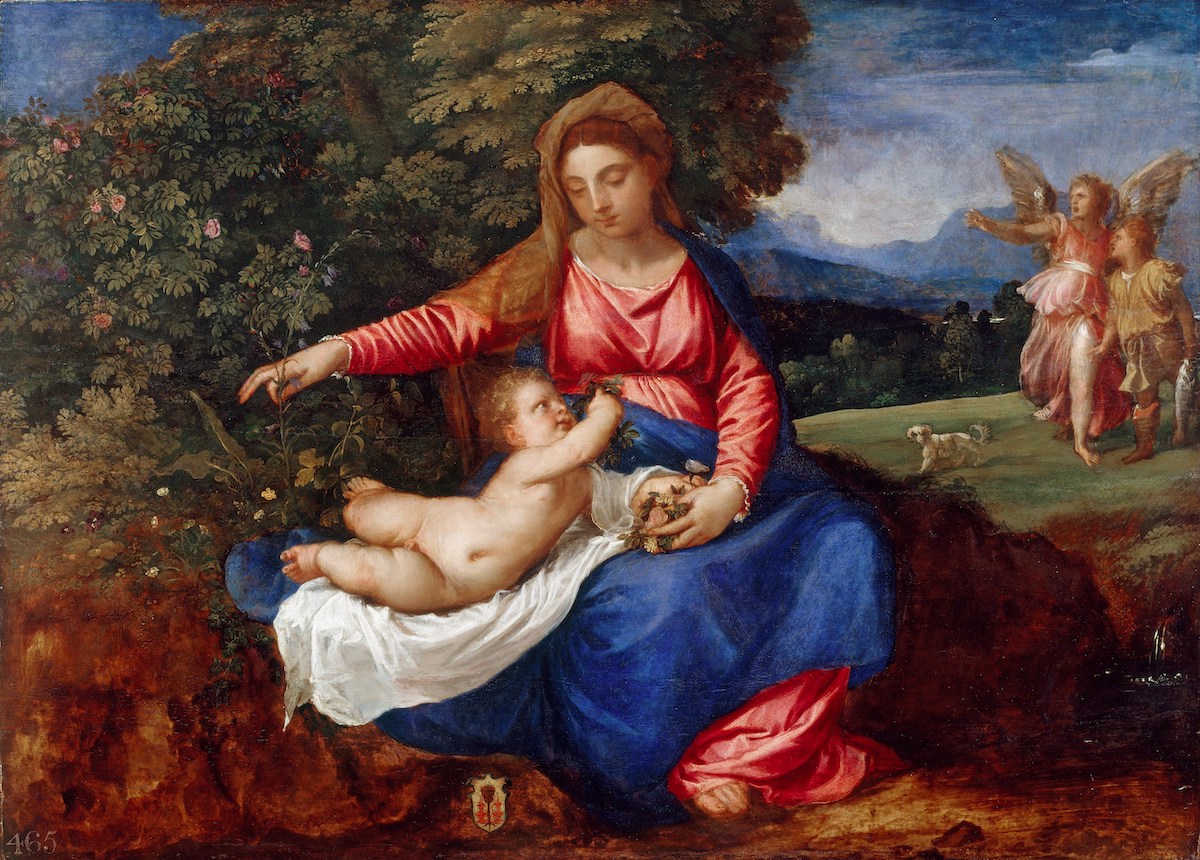 Titian’s Madonna and Child in a Landscape with Tobias and the Angel, c.1535–40, presented to Charles II in 1660 by the states of Holland and West Friesland upon his restoration to the throne. On display in the Picture Gallery at Buckingham Palace, open during the Summer Opening of the State Rooms this year. Royal Collection Trust/© His Majesty King Charles III 2023
Titian’s Madonna and Child in a Landscape with Tobias and the Angel, c.1535–40, presented to Charles II in 1660 by the states of Holland and West Friesland upon his restoration to the throne. On display in the Picture Gallery at Buckingham Palace, open during the Summer Opening of the State Rooms this year. Royal Collection Trust/© His Majesty King Charles III 2023
Charles II’s outlook was also more expansive than his father’s. ‘It all comes down to how he transformed Windsor Castle in the late 1670s,’ says Rufus Bird, co-curator of the 2017 exhibition Charles II: Art and Power at the Queen’s Gallery, Buckingham Palace.
The monarch may have hoped to emulate the achievements of his cousin Louis XIV, who remodelled the Palace of Versailles. ‘Ownership of a painting by, say, Titian says a certain amount about a person,’ says Bird, ‘but re-imagining a building is a quite different matter. Charles II overhauled Windsor entirely, creating magnificent State Apartments on the north side. I think we can understand him best in his approach to the castle.’ He references the many ceiling paintings by Antonio Verrio, only three of which survive, including one of Charles’s queen, Catherine of Braganza, who is depicted, somewhat ironically in light of what is known of their marriage, in the guise of ‘conjugal love’.
The new Carolean age
‘Charles II was instrumental in creating his own image, sitting for Samuel Cooper who took his profile for use in coinage,’ Bird observes, adding: ‘and with King Charles III’s coronation in May, we will see once again an important ritual establishing the image of the King.’
Indeed, as a new royal dawn rises, how arts-oriented is our new king?
A keen water-colourist, who has been painting since the 1970s, King Charles III’s far-reaching innovation in the arts has been the Royal Drawing School, which he co-founded in 2000 with the artist Catherine Goodman to address the increasing lack of observational drawing in art education. The school, located in Shoreditch in east London, runs more than 350 full- and part-time drawing courses annually for adults and children of all ages and abilities.
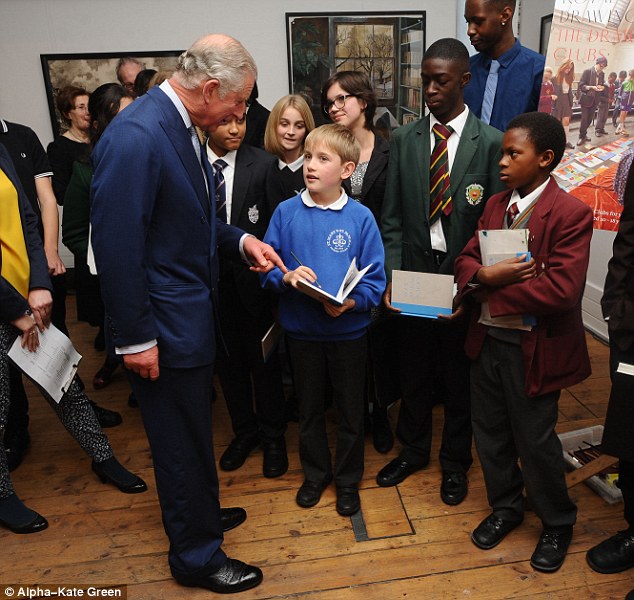 King Charles III visits the Royal Drawing School in Shoreditch. Image: Shutterstock
King Charles III visits the Royal Drawing School in Shoreditch. Image: Shutterstock
In bringing drawing to the fore – highlighting the most rudimentary and essential skill – the King espouses the purest art form. In an expert commentary on his taste in The Art Newspaper, Ruth Guilding points out that ‘in his vision, the natural world and the field of
human endeavour should be in accord, and so he champions rare breeds, old varieties, and art made with brush and pencil’. Guilding’s analysis also cites the architectural designer Ben Pentreath, who has worked with the Duchy of Cornwall on a number of projects. He stresses that King Charles III’s mature vision – as opposed to what some considered his youthful rebellious phase criticising Postmodern architecture – ‘is closer to the world of arts and crafts, of [William] Morris and co or vernacular Lutyens’.
In 2018, an art display at Buckingham Palace marking the King’s 70th birthday included a personal top 25 of historical works from the Royal Collection. Works selected by the monarch include The Adoration of the Shepherds (c.1546) by Jacopo Bassano, which had been acquired by Charles I, and a life-size marble bust of Queen Victoria, given to Prince Albert on his birthday in 1851.
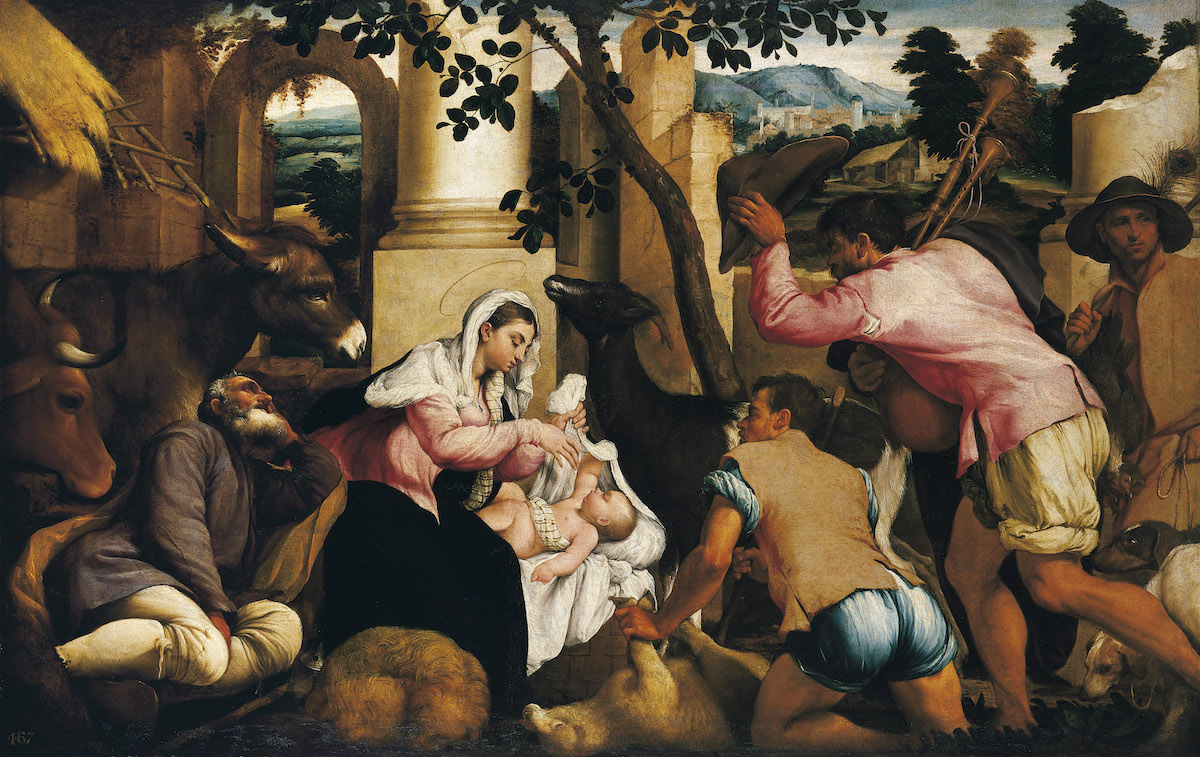 Jacopo Bassano’s The Adoration of the Shepherds, c.1546, currently on display to the public in the King’s Drawing Room at Kensington Palace. Royal Collection Trust/© His Majesty King Charles III 2023
Jacopo Bassano’s The Adoration of the Shepherds, c.1546, currently on display to the public in the King’s Drawing Room at Kensington Palace. Royal Collection Trust/© His Majesty King Charles III 2023
‘I think the choice reflects the depth of his knowledge about so many aspects of fine art, from paintings to decorative arts to sculpture,’ says art historian Bendor Grosvenor, adding, perhaps mischievously, ‘I suppose it’s hard not to become a bit of an expert when you grow up with it in almost every room. But it didn’t have to be. The history of the royal family is full of people who grew up in a similar situation, yet couldn’t tell the difference between a jardiniere and a chamber pot.’
What the arts world waits to see is if King Charles III brings new additions or approaches. During the reign of Queen Elizabeth II some 5,550 acquisitions were made, but those were said, in the main, to be gifts from dignitaries. As Ruth Guilding wrote in The Art Newspaper, they included ‘a basket from Tonga in 1954, a jar of grain from Canada. The Queen was reported to have said that, while the Prince of Wales deplores their quantity and quality, “I’ve got no taste so I’m delighted with them.” But her own purchases remained almost completely uncharted territory.’ What impact will King Charles III’s reign have on the Royal Collection and more? We wait to see.
Find out more
For more on the Royal Collection Trust, including 2023 exhibitions and visits to royal sites, see rct.uk
For the Royal Drawing School, see royaldrawingschool.org
This is an abridged version of a feature in the spring issue of The Arts Society Magazine, out now and available exclusively to members and supporters of The Arts Society (to join, see theartssociety.org/member-benefits).
About the Author
Gareth Harris
An arts writer and editor-at-large of The Art Newspaper
JOIN OUR MAILING LIST
Become an instant expert!
Find out more about the arts by becoming a Supporter of The Arts Society.
For just £20 a year you will receive invitations to exclusive member events and courses, special offers and concessions, our regular newsletter and our beautiful arts magazine, full of news, views, events and artist profiles.
FIND YOUR NEAREST SOCIETY
MORE FEATURES
Ever wanted to write a crime novel? As Britain’s annual crime writing festival opens, we uncover some top leads
It’s just 10 days until the Summer Olympic Games open in Paris. To mark the moment, Simon Inglis reveals how art and design play a key part in this, the world’s most spectacular multi-sport competition



